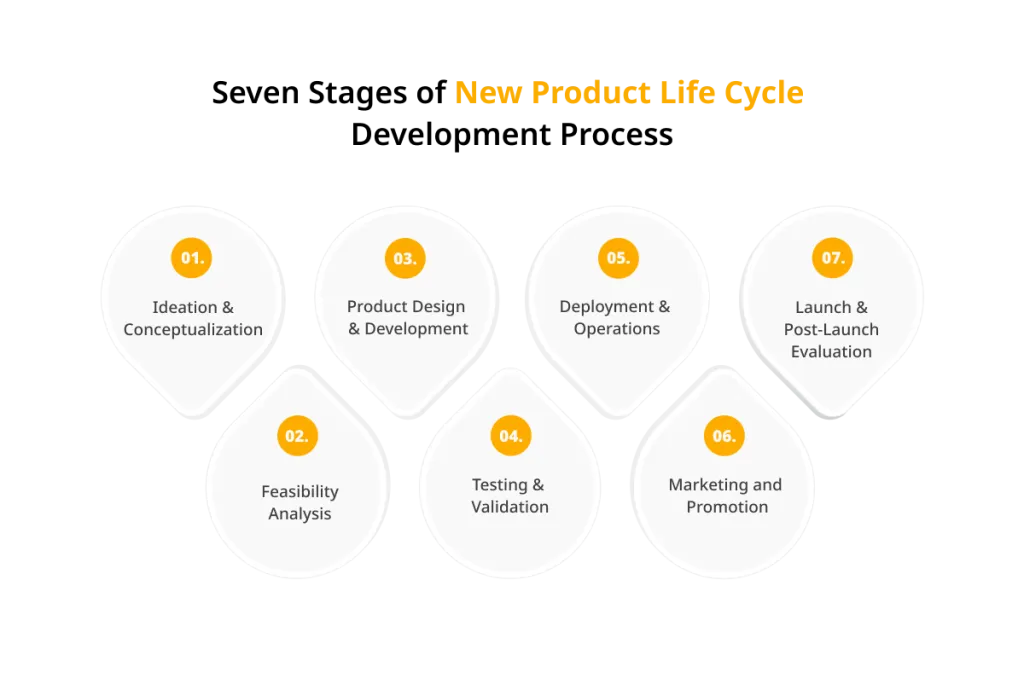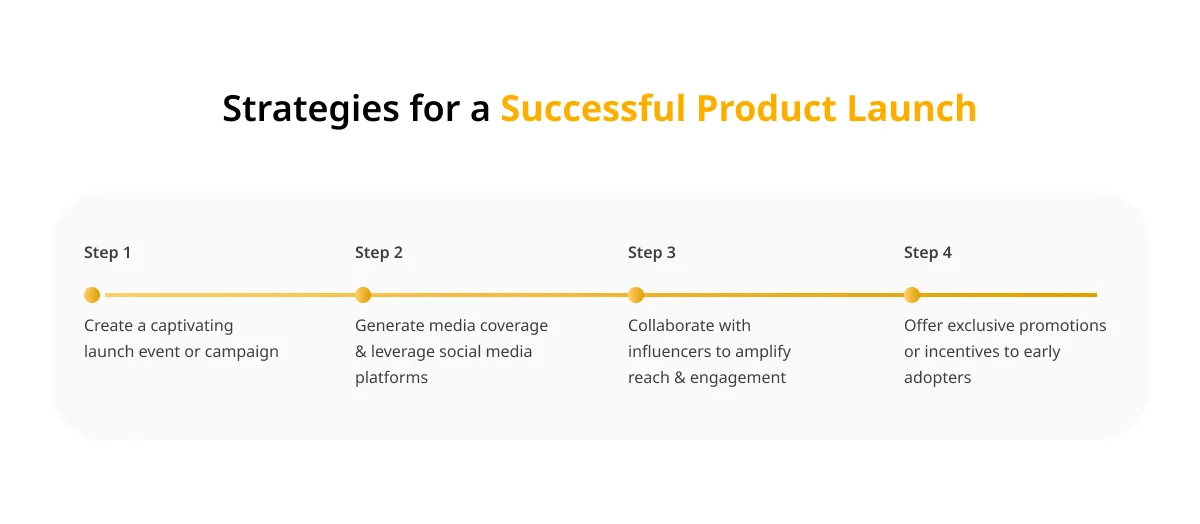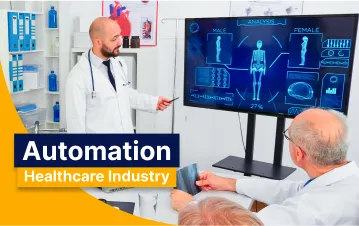Have you ever had a brilliant idea for a new product but didn’t know where to start with bringing it to market?
Or you’ve already launched a product and wish you better understood the development process.
Whether you’re an aspiring entrepreneur or an established business owner, understanding the seven crucial stages of new product development is essential for success.
According to Clayton Christensen, a professor at Harvard Business School, around 30,000 new products are introduced annually, with a staggering failure rate of 95 percent.
Wondering why? Because they often need to pay more attention to the crucial stages of product development.
To help you avoid this pitfall, we’ll take you on a journey from ideation to commercialization through this blog, providing insights and tips to help turn your vision into reality.
Introduction
Bringing a new product to the market is an exhilarating journey filled with excitement and challenges.
From envisioning an innovative idea to witnessing it becomes a reality, the process is an intricate web of strategic decisions and meticulous execution.
In this fast-paced business landscape, a structured approach to new product development becomes the compass that guides entrepreneurs and businesses toward successful launches.
By following a well-defined roadmap, individuals can navigate the complexities, mitigate risks, and maximize the chances of turning their ideas into marketable products.
This blog will delve into seven stages, unraveling the key steps to transform a concept into a thriving product. Let’s embark on this enlightening expedition that will empower you with the knowledge to bring your vision to life and conquer the marketplace.
Seven Stages of New Product Life Cycle Development Process
Here are some crucial stages of new product development to help you reach your business goals.
Stage #1: Ideation & Conceptualization
The ideation and conceptualization stage is crucial in developing new products; it provides a clear vision for their development.
A robust idea-generation process is essential for generating innovative concepts and setting the foundation for success.
Techniques like brainstorming allow for the exploration of market gaps and the generation of diverse ideas.
Another point is market research, which plays a significant role in validating the viability and demand for the product. It helps understand customer needs and assess market potential.
The initial concept takes shape during this stage of refinement and iteration, incorporating insights from brainstorming and market research.
Stage #2: Feasibility Analysis
Feasibility analysis is crucial for evaluating the practicality of a new product. Here are the factors to consider in the study:
- Technical feasibility assessment examines if the available resources and technological capabilities can develop the product.
- Market potential analysis helps determine if there is sufficient demand and customer base for the product.
- Cost analysis involves estimating development, manufacturing, and marketing expenses and projecting potential revenues.
- Legal considerations involve understanding and complying with applicable regulations and obtaining necessary certifications.
- Conducting a SWOT analysis helps identify strengths, weaknesses, opportunities, and threats associated with the product.
Findings from the feasibility analysis inform adjustments or refinements of the product concept.
These adjustments ensure alignment with market needs, technical feasibility, and financial viability. With the help of product development engineering, you can easily accomplish this without any challenges.
Explore our result-driven product development services
Stage #3: Product Design & Development
Product design and development is a crucial stage where the initial concept takes shape and transforms into a tangible product design.
You can hire an app developer or a product development engineering team to do this efficiently.
Engineers, designers, and other experts work collaboratively during this stage to bring the concept to life and create prototypes that embody the envisioned product.
- Engineers play a vital role in the product design and development process by focusing on the technical aspects of the design. They ensure the product meets safety standards, functionality requirements, and technical feasibility.
- Designers contribute their expertise in aesthetics and user experience. They focus on creating visually appealing designs that resonate with the target market and provide a seamless and enjoyable user experience.
- Other experts, such as usability specialists, materials scientists, and manufacturing engineers, may also be involved. Their contributions are valuable in optimizing functionality, materials selection, and manufacturing processes.
Here are several factors to be considered during the product design and development stage.
- Functionality is essential to ensure the product performs its intended purpose effectively and efficiently.
- Aesthetics play a significant role in attracting customers and creating a strong brand identity. Designers carefully consider color, form, and texture to create visually appealing products.
You can contact a product development service provider to do this efficiently.
- User experience is another critical factor. Designers aim to create intuitive and user-friendly interfaces, considering factors such as ease of use, accessibility, and overall satisfaction during product usage.
- Manufacturability is also considered, as the product design must be feasible for mass production. Engineers and designers collaborate to ensure the design can be efficiently manufactured at scale, considering materials, production processes, and cost-effectiveness.
- Continuous improvement and refinement are emphasized throughout the product design and development stage. Iterative testing and user feedback collection enable identifying areas for improvement and optimization. At this stage, it will be a smart idea to prioritize strategy consulting to ensure that the product aligns with market demands and business objectives.
- Ongoing refinement allows for incorporating technological advancements, market trends, and customer preferences. A software product development service provider ensures the product remains competitive, meets evolving customer needs, and aligns with market demands.
Ultimately, product design and development require a harmonious collaboration between engineers, designers, and experts from various fields to create a successful and appealing product that meets the needs and expectations of the target market.
Stage #4: Testing & Validation
Testing and validation are crucial in ensuring that a product meets high-quality standards before its launch into the market. Different types of testing are:
- Alpha testing involves internal testing by the development team to identify and fix any issues or bugs in the product. It helps ensure that the product functions properly and meets the desired specifications.
- Beta testing, conversely, involves releasing the product to a select group of external users or customers, allowing for real-world testing and feedback gathering. The purpose is to identify usability issues, gather insights on the user experience, and validate product performance in different scenarios.
- Obtaining feedback from target customers during the testing and validation stage is vital. It provides valuable insights into their preferences, expectations, and areas of improvement. This feedback is incorporated into further product iterations to enhance its features, usability, and overall quality.
- Product alignment with the initial concept is essential. Throughout the testing and validation process, evaluating whether the product meets the intended goals and objectives set during the ideation and conceptualization stage is critical.
- Market demands also play a significant role in testing and validation. By gathering feedback and monitoring market trends, companies can ensure that the product aligns with the current needs and preferences of the target market.
Get free consultation and let us know your project idea to turn it into an amazing digital product.
Stage#5: Deployment & Operations
Scaling up operations is a crucial stage for deployment to prepare the product for commercialization.
Companies can either produce in-house or outsource manufacturing to third-party manufacturers.
In-house production provides greater control over the process, quality, and intellectual property, although it requires significant investments.
On the other hand, outsourcing offers cost savings, flexibility, and specialized expertise, necessitating careful selection and management of manufacturing partners.
Regardless of the chosen approach, establishing robust supply chains and implementing effective quality control systems are vital. A well-functioning supply chain ensures a smooth flow of materials, components, and finished products, reducing delays and disruptions.
Quality control systems are crucial in maintaining product quality, involving rigorous inspections, testing, and monitoring throughout production.
Also Read: A Complete Guide On Software Product Development Life Cycle
Stage#6: Marketing and Promotion
Developing a comprehensive marketing strategy is essential for effectively promoting IT services.
Exploring different marketing channels and tactics, such as digital marketing, traditional advertising, and public relations, helps reach the target audience through various mediums.
Crafting a compelling brand story and value proposition is significant in communicating IT services’ unique benefits and value to potential customers.
- Branding: Establishing a solid brand identity is essential. This includes creating a unique brand name, designing an interesting logo, and developing a consistent visual identity that reflects the product’s values and positioning. Additional branding activities such as designing digital business cards, branded stationery, and customized marketing materials further strengthen brand recall. Tools like Uniqode’s business card can help create professional, scannable digital business cards for seamless networking.
- Target Audience: Identify and understand your target audience. Conduct market research to determine their demographics, preferences, and needs. This knowledge helps tailor marketing messages and select appropriate channels to reach the right customers.
- Marketing Channels: Determine the most effective channels to reach your target audience. This may include digital platforms (websites, social media, email marketing), traditional media (TV, radio, print), or a combination. Select channels that align with your audience’s preferences and behavior.
- Messaging: Develop compelling messaging that communicates the unique value proposition of your product. Highlight key benefits, features, and how it solves customers’ pain points. Craft messages that resonate with your audience, addressing their needs and aspirations.
- Content Creation: Create engaging content to educate, inform, and entertain your audience. This can include blog posts, videos, infographics, and case studies. Content should be relevant, valuable, and shareable to attract and retain the attention of your target customers. Stay on top of YouTube trends by incorporating popular formats like Shorts, trending challenges, and interactive videos.
- Online Presence: Establish a solid online presence to reach a wider audience. Optimize your website for search engines (SEO) to increase visibility. Engage with your audience on social media platforms and actively participate in relevant online communities and forums.
- Advertising: Consider various advertising options to reach your target audience effectively. This may include online advertising (pay-per-click ads, display ads), print ads, outdoor billboards, or sponsorship of events or influencers. Select advertising mediums that align with your budget and target market.
- Public Relations (PR): Utilize PR strategies to build credibility and generate positive media coverage. Develop relationships with journalists, bloggers, and influencers in your industry. Issue press releases, participate in media interviews, and seek product reviews and endorsement opportunities.
- Analytics and Measurement: Track and measure the effectiveness of your marketing efforts. Utilize analytics tools to gather data on website traffic, social media engagement, conversion rates, and sales. Analyze this data to gain insights and make data-driven decisions to optimize your marketing strategy.
Identifying target customers and creating tailored marketing campaigns ensures that the message resonates with the intended audience and increases the chances of generating leads and conversions.
Read this blog: Software Product Development Process To Develop Successful Business Solutions
Stage #7: Launch and Post-Launch Evaluation
Launching a new IT service in the market brings both excitement and challenges. It involves introducing the service to the target market and positioning it effectively.
Strategies for a successful service launch include creating buzz through marketing initiatives, generating media coverage, and leveraging influencers to amplify the service’s visibility.
Monitoring sales, customer feedback, and market response post-launch is crucial in assessing the service’s performance and identifying areas for improvement.
Conducting a post-launch evaluation helps gather insights, analyze the service’s reception, and determine necessary adjustments or enhancements for future iterations.
This evaluation aids in refining the service and ensuring its continued relevance and success in the market.
ValueCoders can assist you with product development.
Summing Up
The new product development process can be intimidating, but it doesn’t have to be.
With these seven stages of product development in mind, you will better understand the steps necessary to bring your idea from concept to reality and ensure success for your company.
By recognizing potential obstacles early on and utilizing all available resources at each stage, you will indeed create a valuable and successful product that consumers will love!








